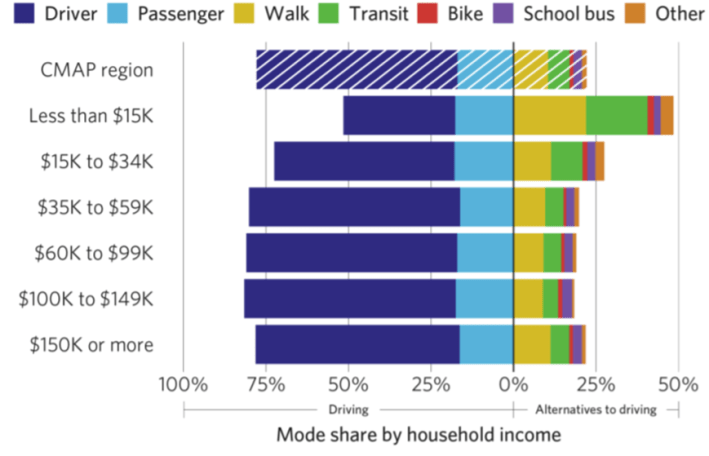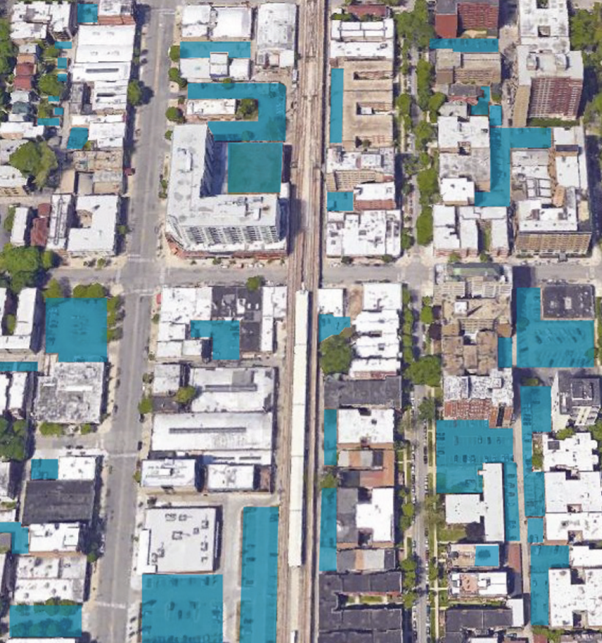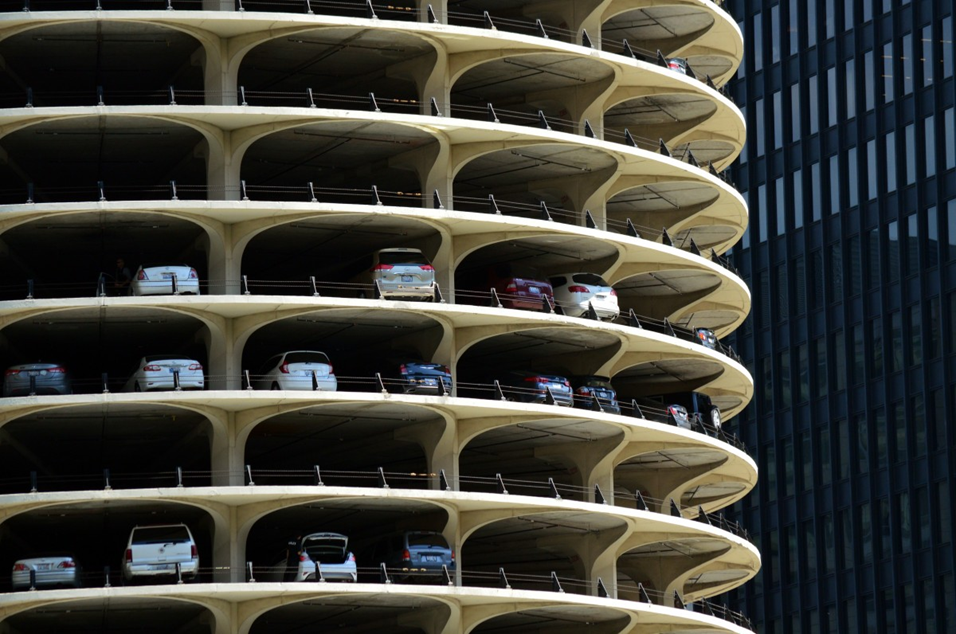Imagine if hotdog stands had to hand you a free bottle of ketchup with every order. In addition to being a culinary abomination, we’d be swimming in ketchup we didn’t need. And hotdog vendors aren’t charities—they’d quickly add the cost of that "free" Heinz bottle to the price of the dog. It sounds absurd. But that's exactly what Chicago does with parking. By requiring developers to build parking alongside new apartments, the city raises the cost of housing to build more parking spots—a third of which then sit empty. It’s time to build on the success of the city's transit-oriented development ordinance, which essentially eliminated parking minimums for residences near transit, and get ride of parking minimums for housing citywide.
We all pay for ‘free’ parking
In a wrongheaded effort to keep on-street parking super-easy, most U.S. cities require developers to build more car spaces than they otherwise would. In Chicago, that means including at least one parking spot per new apartment, and 2 spots per single-family home. (I'll discuss the lower requirements in transit-served locations in a moment.) Live car-free or car-light? Don’t want a parking spot? Doesn’t matter. Even if it’s now rented out separately, the city likely required at least one parking spot to be created when your unit was built.
The problem is that somebody has to pay for all that extra parking, and it’s very expensive. UCLA professor and parking expert Donald Shoup estimates that in Chicago an above-ground parking spot costs about $29,000 to build, and an underground spot comes in at a cool $36,000. And because those minimum parking rules force builders to create a large number of extra empty spots, the actual rate buildings can charge to drivers is artificially low. So, developers pass along the cost in the form of higher rent to tenants. And those costs are eye-watering: Researchers estimate that required garage parking raises rents by an average of 17 percent.
It gets worse. The wealthier you are, the more likely you are to drive. In 2019, the Chicago Metropolitan Agency for Planning looked at travel patterns in Northeastern Illinois and found that the lowest income residents were most likely to rely on transit, and that car use rose steadily with income. The most car-reliant residents made between $100,000 and $150,000 annually. High-income households drive. Lower-income households pay rent. By forcing renters to subsidize parking, minimum parking requirements function as a tax on the poor to subsidize the wealthy. And in less-wealthy neighborhoods where developers can’t pass along higher costs to renters, projects simply don’t get built in the first place—amplifying the one-two punch of gentrification and disinvestment that Chicago is all too familiar with.

In Minneapolis, we’ve seen the benefits of relaxed parking minimums play out in practice. After Minneapolis began to relax its mandatory parking minimums, the number of parking spaces built began to drop rapidly, and rents fell too. Minneapolis planning commissioner Nick Magino found that rents on new studio apartments dropped from roughly $1,200 a month to under $1,000. Even better, a whole new class of units cropped up. Rather than just luxury towers with large parking footprints, smaller-scale developments began to appear. Without the need to build a parking lot (or expensive underground spots), Minneapolis began to see more affordable, neighborhood-scale developments.
The TOD ordinance was a good start
Chicago has already made important progress on reducing parking minimums. As Streetsblog has covered, the transit-oriented development ordinance in 2013 cut parking minimums to 0.5 spaces within a quarter mile of ‘L’ stops. In 2015, the city added select bus corridors, and allowed those parking minimums to be waived completely with special permission. Those changes had an impact: Developers building in areas that qualified for the TOD reductions began building fewer parking spots. Now it’s time to eliminate minimum parking restrictions citywide.
Even though the city has cut parking rules in the most transit-rich areas, we’re still requiring way more parking than we actually need. In 2016, the Center for Neighborhood Technology found that one in three apartment parking spots stay empty overnight in Chicago (when there should be the highest use).
And it’s a mistake to assume that buildings outside of transit corridors must be required to supply more parking. Chicagoans find lots of different ways to get around, and with the Divvy bike-share expansion and growth of other mobility options, we shouldn’t be locking ourselves into a car-heavy future. When Buffalo eliminated parking minimums citywide, new mixed-use developments had 53 percent fewer parking spots than before. And the city didn’t just see fewer parking spots constructed along its light rail line, but in other neighborhoods as well. Similarly, Minneapolis and St. Paul both started by eliminating parking minimums near transit, but then lifted parking minimums completely after it became clear that there was citywide demand for developments with less parking.

And while no discussion of parking is complete without a nod to Chicago’s terrible 75-year parking meter contract, even that wouldn’t be a barrier. Streetsblog contributor Michael Podgers notes that the contract targets commercial corridors and shouldn’t be impacted by required residential parking, although there might be a greater need for residential permit parking on some side streets. And of course, eliminating parking minimums doesn’t prevent developers from building parking where it’s needed. It just means that they don’t have to build expensive parking where it isn’t needed.
A bigger concern is that eliminating parking minimums could allow developers to avoid the city’s Affordable Requirements Ordinance. The ARO kicks in when developers need a zoning change, and mandates that 20 percent of units be rented below market rates (60 percent of the Area Median Income). If developers can avoid applying for a zoning change to eliminate parking, then they won’t need to produce those affordable units. But very few zoning requests under the current system exclusively cover parking, which means most existing zoning changes would likely still be required. And the existing ARO system is producing nowhere near enough affordable units. In contrast, a 17 percent drop in rents for new buildings could help ease the pressure on renters citywide and reduce the number of Chicagoans forced to wait for a rent-restricted unit.
A chance for to build a more equitable and affordable city
Rather than continue to pursue a patchwork set of parking changes, Chicago should eliminate parking minimums completely. Plenty of parking will still be built, but if the experience of other cities is any indication, we’ll likely be surprised by the demand for parking-lite developments. Fortunately, We Will Chicago, the City’s first comprehensive planning effort in more than 50 years, is currently underway. Let’s hope that the new plan prioritizes the housing Chicago actually needs, rather than forcing renters to pay for more wasted parking.




